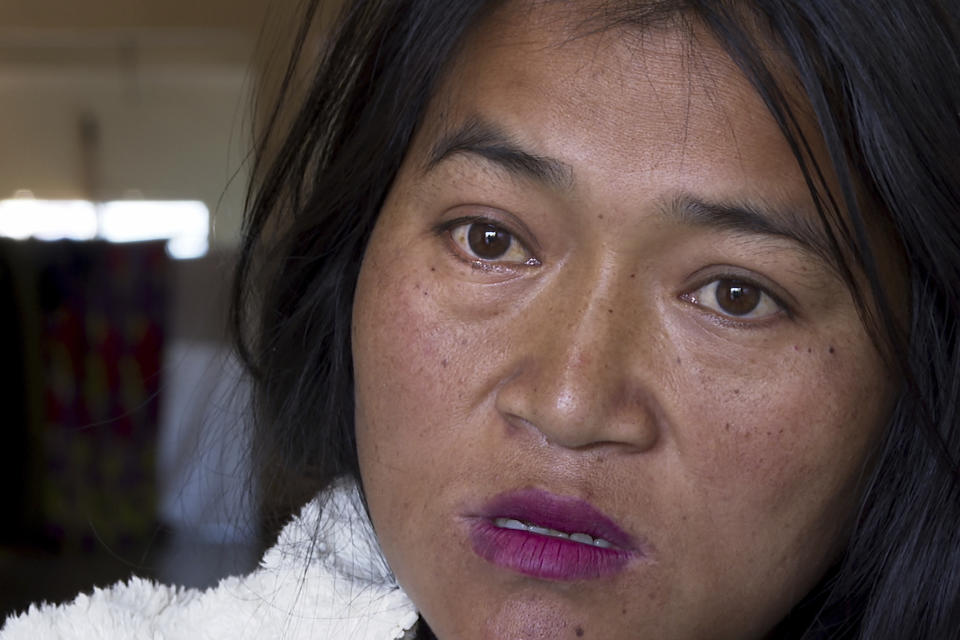Over tens of thousands have been forced to flee their homes in northeast India’s Manipur state following last year’s outbreak of violence between the majority Meitei community and the minority Kuki-Zo tribes.
KANGPOKPI, India – When violence erupted in her neighborhood in northeast India, Phalneivah Khonsai fled with only the bare essentials, hoping to return home soon. But that hope has long faded.
Khonsai, 35, her husband, and their three children escaped to the hills as mobs torched homes, including theirs. That was in May last year. Nearly 19 months later, they remain displaced, living in a makeshift relief camp housed in a government building in Kangpokpi, about 50 kilometers (30 miles) from Imphal, the capital of Manipur state.
The relief center offers little more than damp walls and cramped, dark interiors. Fabric sheets serve as partitions for at least 75 families, leaving Khonsai and others with little privacy.
“It is very difficult to live here,” she said, watching women go about their daily chores, washing clothes and dishes in the camp’s limited facilities.
Khonsai’s plight is shared by tens of thousands of others displaced by ethnic violence in Manipur. Clashes between the majority Meitei community and the minority Kuki-Zo tribes have claimed more than 250 lives and driven at least 60,000 people from their homes since the unrest began last year.
The state is now effectively split into two ethnic zones: the Meiteis, predominantly Hindu, control the Imphal Valley, while the Kuki-Zo tribes occupy the surrounding hilly areas. Armed militias patrol roads, buffer zones are guarded by security forces, and both communities live in fear, unable to cross into each other’s territory.
The violence erupted over demands by the Meiteis to be granted Scheduled Tribe status, a designation that brings government benefits such as reserved jobs and educational opportunities. The Kuki-Zo tribes opposed the move, arguing it would deprive them of their rights and bar them from purchasing land in Meitei-majority areas.
What began as protests spiraled into widespread violence, with both sides attacking villages, torching homes, and killing civilians. While the intensity of the clashes has lessened, sporadic flare-ups persist. In November, ten people were killed by paramilitary forces, reigniting tensions.
For Khonsai, returning home is not an option. “If we go back, they will kill us,” she said, her voice heavy with resignation. “There is no hope for going back.”
The Kuki-Zo community has borne the brunt of the violence, accusing the state’s Chief Minister, N. Biren Singh, of siding with the Meiteis. Singh, a Meitei himself, denies these allegations, but trust is in short supply. The Kukis are now demanding administrative autonomy and federal intervention to address their grievances.
The Meiteis, too, have their share of displaced families. In Imphal, over 600 Meitei refugees, including Yengsom Junksom Memi, live in a relief center after fleeing their homes in Kuki-dominated areas.
“We have no future left,” Memi said. “It is difficult to even manage food for the morning and evening.”
The mistrust between the communities runs deep, with no one daring to venture into the other’s territory. Calls for Prime Minister Narendra Modi to visit Manipur have grown louder, though he has yet to set foot in the conflict-ridden state. Opposition parties and community leaders argue that his intervention is essential to finding a solution.
Ngamminlun Kipgen, a spokesperson for the Committee on Tribal Unity representing the Kuki-Zo community, believes the only path to peace is dividing the state into two separately administered regions.
“The nation must understand that the Kukis and the Meiteis, for now, cannot live together,” Kipgen said. “Forcing the communities together at this critical juncture will only worsen the situation.”

